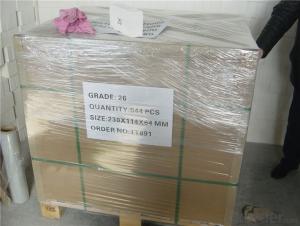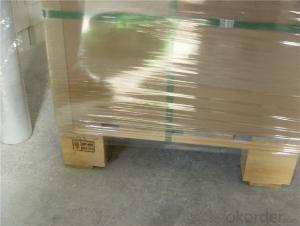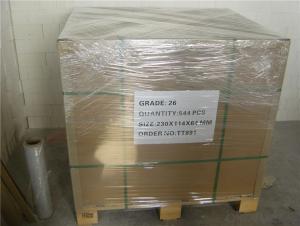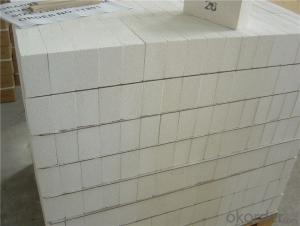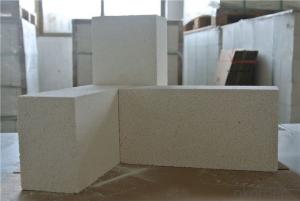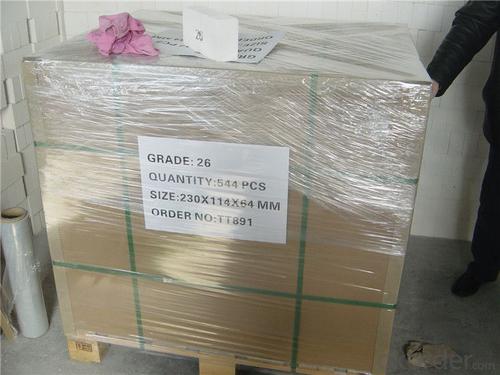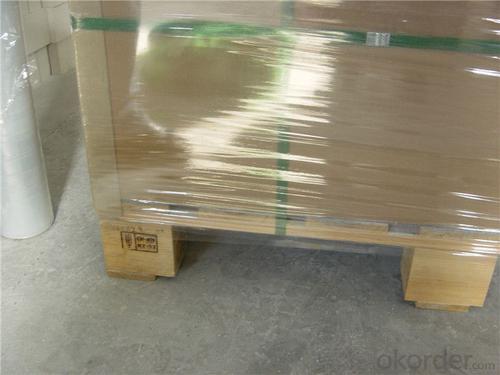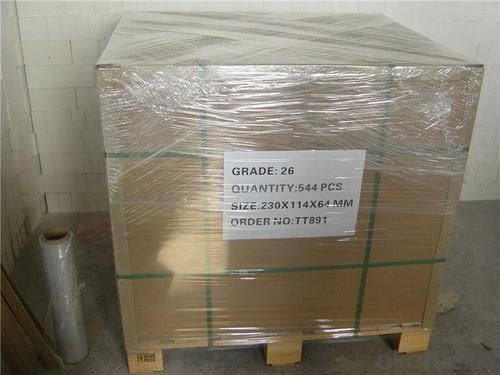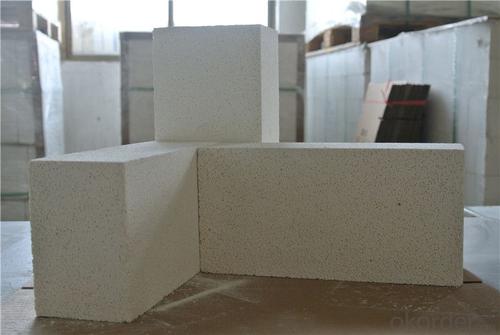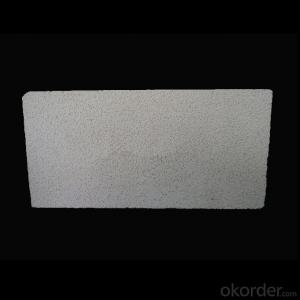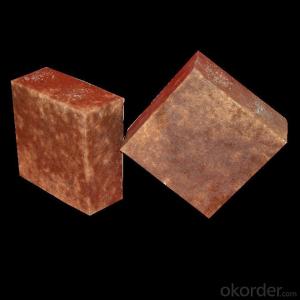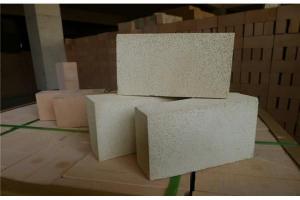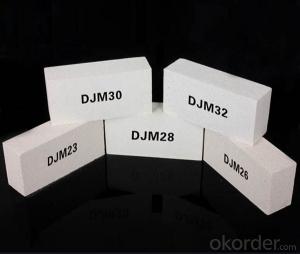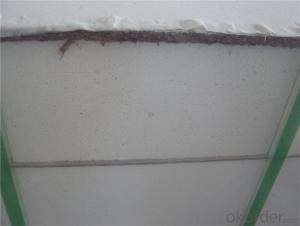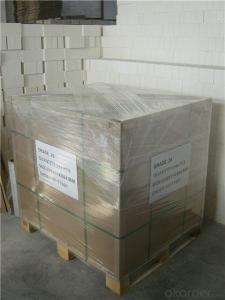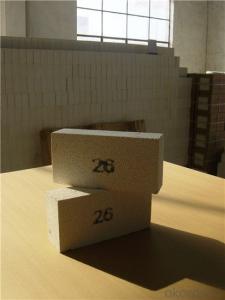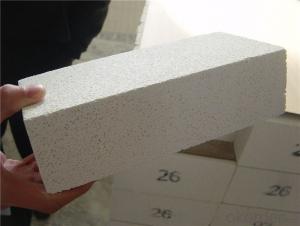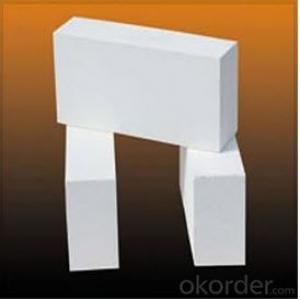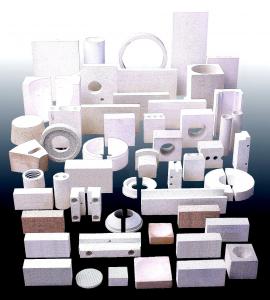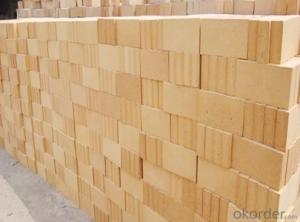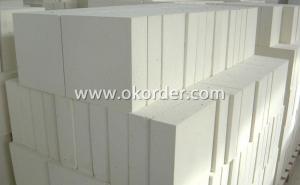Insulating Fire Brick - CCE.Fire Fire Resistant Insulation Fire Clay Brick
- Loading Port:
- Shanghai
- Payment Terms:
- TT OR LC
- Min Order Qty:
- 1 m.t.
- Supply Capability:
- 1000 m.t./month
OKorder Service Pledge
OKorder Financial Service
You Might Also Like
Thermal Insulation Fire Clay Brick
Refractory brick is a block of refractory ceramic material used in lining furnaces, kilns, fireboxes, and fireplaces.
We provide high quality Refractory Fire Bricks that are used on wide range in the various industries like Cement, Glass and Steel. Refractory Fire Bricks are provided as per the quantity and specifications required by the customers. We provide an extensive range of Refractory Fire Bricks at reasonable prices that depend upon the quantity ordered.
Application
Insulating Fire Brick are used for the lining of converter, alternating current arc furnace, direct Current arc furnace and the ladle slag line, etc.
Company Advantage
(1)Long Insulating Fire Brick manufacture history: 25 years manufacturer
(2)Advanced equipment
(3)Diversification of production standards: ISO ANSI FEPA JIS ASTM
(4)Flexible payment: T/T L/C D/P D/A
(5)Professional marketing team and after-sale service
Insulating Fire Brick main feature:
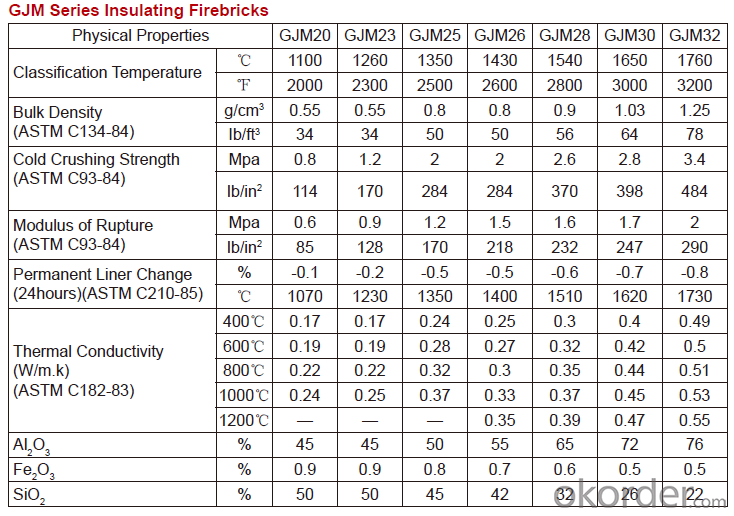
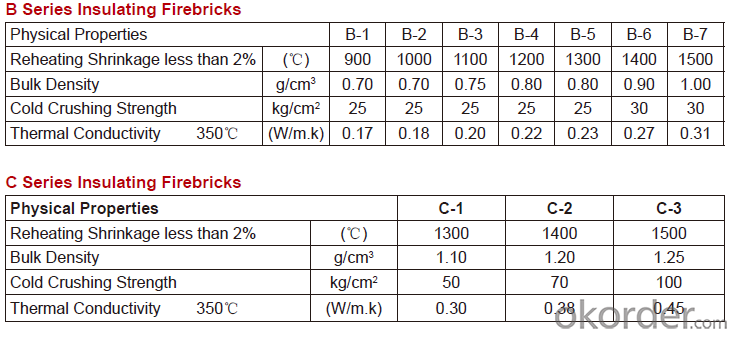
Equipment
1 unit of Ceramic Abrasive (SG Abrasive) pilot production line
2 units of Compact grain Abrasive pilot production lines
1 unit of high-end coated abrasives (abrasive cloth) production line
2 units of Boron Carbide production lines
3 large flexible crushing and sieving lines for grit production lines
6 units of 5000KVA-10000KVA dumping type electric arc furnaces for Brown Fused Alumina fusion
Q1 What’s the transport method?
A1 FCL delivery goods with wooden pallet or wooden case by sea; If LCL delivery, must with wooden case; Sometimes need open top, flat rack or bulk cargo.
Q2 What’s the required payment term?
A2 Generally 30% TT as the prepayment, 70% TT before delivery. If need, 100% Irrevocable Letter of Credit or negotiation.
Q3 Which country are our products exported to?
A3 Apart from entire Chinese market, the US, Russia, Japan, Korea, Australia and some Southeast Asian Nations.
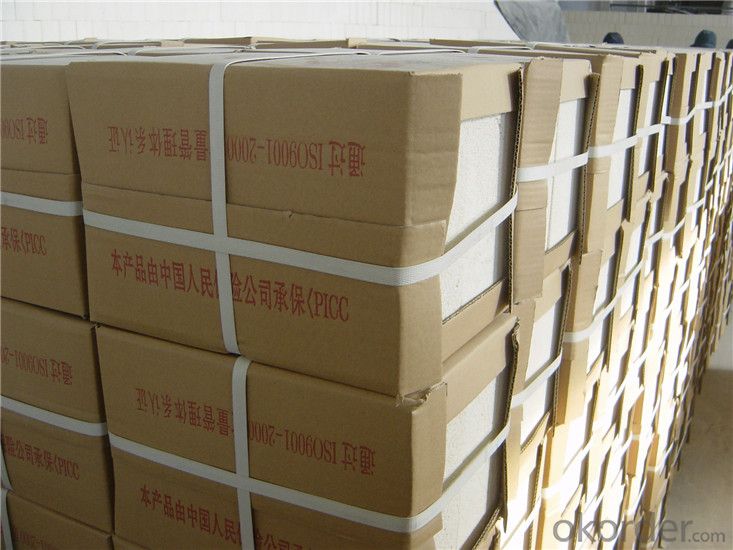
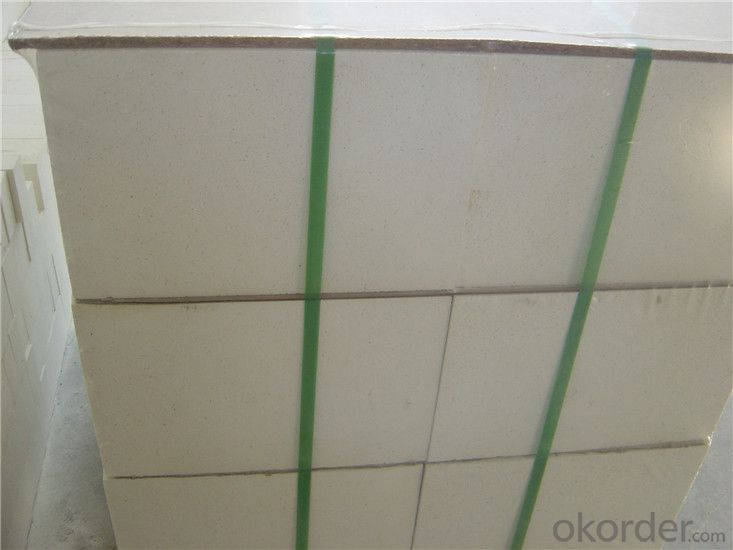
- Q: Is it possible to recycle broken insulating fire bricks?
- Yes, it is possible to recycle broken insulating fire bricks. Insulating fire bricks are commonly made from materials such as clay and alumina, which can be recycled. The broken bricks can be crushed into small particles or ground into a fine powder, and then mixed with other materials to create new bricks or other construction materials. Additionally, some recycling facilities may accept broken insulating fire bricks and process them for reuse in other industries. Recycling broken insulating fire bricks helps to reduce waste, conserve resources, and minimize the environmental impact associated with manufacturing new bricks from scratch.
- Q: Is it possible to paint or coat insulating fire bricks?
- Indeed, it is feasible to apply paint or coat insulating fire bricks. Nevertheless, it is imperative to utilize a type of paint or coating that can endure elevated temperatures, given that insulating fire bricks are intended for usage in exceedingly hot surroundings. Ordinary paint or coatings may not be appropriate since they can combust or deteriorate under high temperatures. It is advisable to employ specialized high temperature paint or coatings that have been specifically formulated to withstand the intense heat of insulating fire bricks. Typically, these types of paint or coatings possess a resistance to high temperatures of several hundred degrees Celsius or greater. Moreover, it is crucial to adequately clean and prepare the surface of the bricks prior to applying any paint or coating to ensure optimal adhesion and durability.
- Q: What are the main properties of insulating fire bricks?
- Insulating fire bricks, also known as IFBs, possess several key properties that make them ideal for various high-temperature applications. First and foremost, insulating fire bricks have excellent thermal insulation properties. They have low thermal conductivity, meaning they are effective at preventing heat transfer. This characteristic makes them suitable for use in environments where insulation is crucial, such as kilns, furnaces, and industrial ovens. The low thermal conductivity of IFBs helps to minimize heat loss and maintain high temperatures within these structures. Another important property of insulating fire bricks is their high refractoriness. They are capable of withstanding extreme temperatures without losing their structural integrity. IFBs can withstand temperatures of up to 3000°F (1650°C), making them suitable for use in extremely hot environments. This high refractoriness allows them to be used in applications that involve the containment of molten metals, glass, or other materials at elevated temperatures. Furthermore, insulating fire bricks are lightweight and have a relatively low bulk density. This lightweight nature makes them easier to handle and install, reducing the labor and cost involved in construction or maintenance projects. The low bulk density of IFBs also contributes to their excellent thermal insulation properties since it reduces the number of air pockets within the material, thereby minimizing heat transfer. Additionally, insulating fire bricks have good chemical resistance. They are highly resistant to chemical attack from various substances, including acids, alkalis, and other corrosive agents. This property allows IFBs to maintain their structural integrity even in harsh chemical environments, making them suitable for applications in industries like chemical processing, metal refining, and incineration. Finally, insulating fire bricks are known for their durability and long lifespan. They have excellent mechanical strength and can withstand thermal cycling, meaning they can endure repeated exposure to extreme temperatures without cracking or breaking. This longevity makes them a cost-effective choice for applications where durability and reliability are paramount. In summary, the main properties of insulating fire bricks include excellent thermal insulation, high refractoriness, lightweight structure, good chemical resistance, and durability. These properties make IFBs suitable for a wide range of high-temperature applications, providing efficient insulation, protection against extreme temperatures, and long-lasting performance.
- Q: Can insulating fire bricks be used in metal melting furnaces?
- Indeed, metal melting furnaces can utilize insulating fire bricks. Specifically tailored to endure high temperatures and offer exceptional insulation, these bricks prove to be an optimal selection for applications such as metal melting furnaces. These bricks possess a low thermal conductivity, which aids in heat preservation and diminishes energy usage. Furthermore, insulating fire bricks are lightweight, long-lasting, and capable of withstanding thermal shock, rendering them a fitting choice for the severe conditions experienced in metal melting furnaces.
- Q: Can insulating fire bricks be used in residential applications?
- Yes, insulating fire bricks can be used in residential applications. They are commonly used in residential fireplaces, wood-burning stoves, and pizza ovens to provide insulation and increase energy efficiency. Their high heat resistance and insulating properties make them suitable for these applications.
- Q: What are the different sizes available for insulating fire bricks?
- Insulating fire bricks come in various sizes to accommodate different construction and insulation needs. The sizes available for insulating fire bricks can vary depending on the manufacturer and the specific requirements of the project. However, some commonly available sizes include standard bricks measuring 9" x 4.5" x 2.5", which are commonly used in residential and commercial applications. Additionally, smaller sizes such as 9" x 4.5" x 1" or larger sizes like 12" x 6" x 3" may also be available. It is important to note that these sizes are just examples and the actual sizes and dimensions can vary. It is always recommended to consult with the manufacturer or supplier to determine the specific sizes available for insulating fire bricks for your particular project.
- Q: Are insulating fire bricks suitable for use in kilns and furnaces?
- Insulating fire bricks are a suitable choice for kilns and furnaces, offering excellent thermal insulation that is ideal for applications requiring high temperatures. These bricks are specifically designed to provide outstanding thermal insulation, making them perfect for kilns and furnaces. With their low thermal conductivity, they effectively minimize heat loss, thereby enhancing energy efficiency. Furthermore, their lightweight and durable nature allows for easy installation and long-lasting performance in high-temperature environments. Not only are they resistant to thermal shock, but they also withstand rapid temperature changes, making them a reliable option for kilns and furnaces. Overall, insulating fire bricks are an exceptional choice for insulation and the maintenance of high temperatures in kilns and furnaces.
- Q: Can insulating fire bricks be used in crucibles?
- No, insulating fire bricks cannot be used in crucibles. Insulating fire bricks are designed to have low thermal conductivity and are commonly used for insulation purposes in applications such as kilns, furnaces, and fireplaces. However, crucibles require materials with high thermal conductivity and resistance to high temperatures to withstand the intense heat and chemical reactions that occur during various processes such as melting or refining metals, conducting high-temperature experiments, or performing chemical reactions. Therefore, crucibles are typically made from materials such as graphite, clay, or ceramic, which can withstand the extreme conditions and provide efficient heat transfer.
- Q: Can insulating fire bricks be used in rotary kilns?
- Yes, insulating fire bricks can be used in rotary kilns. Insulating fire bricks are designed to have low thermal conductivity, which helps to reduce heat loss and improve energy efficiency in high-temperature applications like rotary kilns. Additionally, these bricks are lightweight and have good thermal shock resistance, making them suitable for the harsh and dynamic conditions within a rotary kiln.
- Q: Can insulating fire bricks be used as a refractory material?
- Insulating fire bricks can indeed serve as a refractory material, given their specific design for enduring high temperatures and thermal shock. These bricks prove suitable for situations necessitating heat insulation and refractory properties. By virtue of their low thermal conductivity, they effectively diminish heat loss and conserve energy. Industries such as steel, glass, ceramics, and petrochemicals frequently employ insulating fire bricks as lining materials within furnaces, kilns, ovens, and other equipment operating at elevated temperatures. The combination of their capacity to withstand extreme temperatures and insulating characteristics renders them an outstanding option for refractory applications.
Send your message to us
Insulating Fire Brick - CCE.Fire Fire Resistant Insulation Fire Clay Brick
- Loading Port:
- Shanghai
- Payment Terms:
- TT OR LC
- Min Order Qty:
- 1 m.t.
- Supply Capability:
- 1000 m.t./month
OKorder Service Pledge
OKorder Financial Service
Similar products
Hot products
Hot Searches
Related keywords
